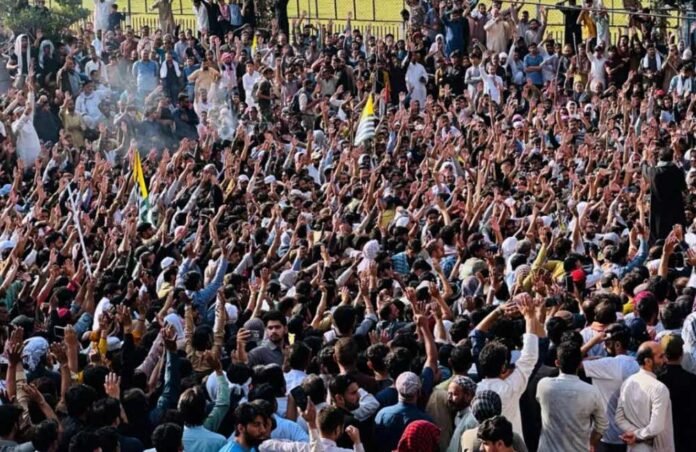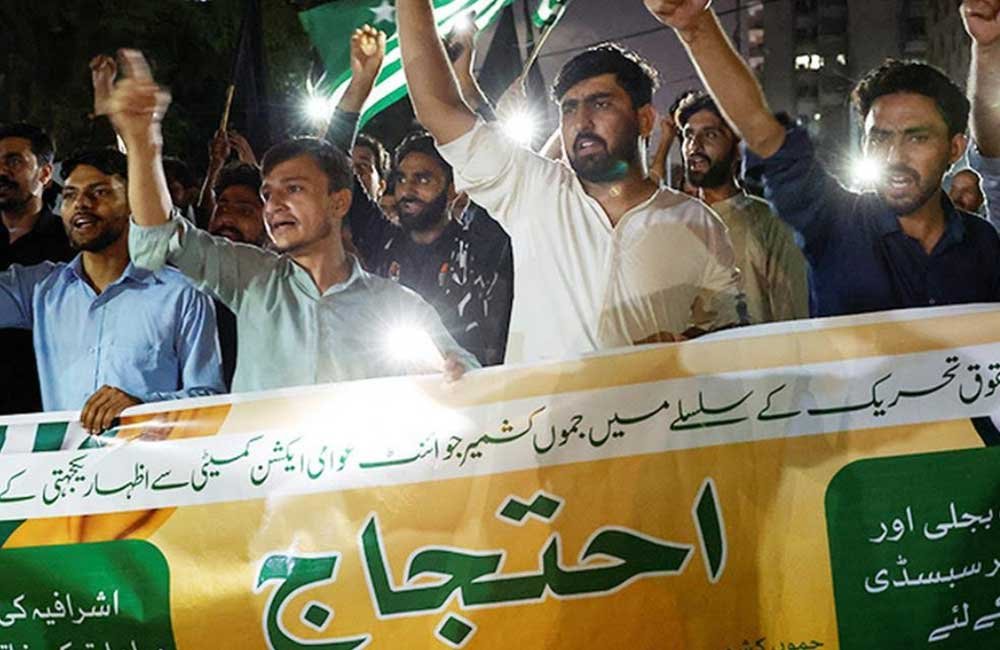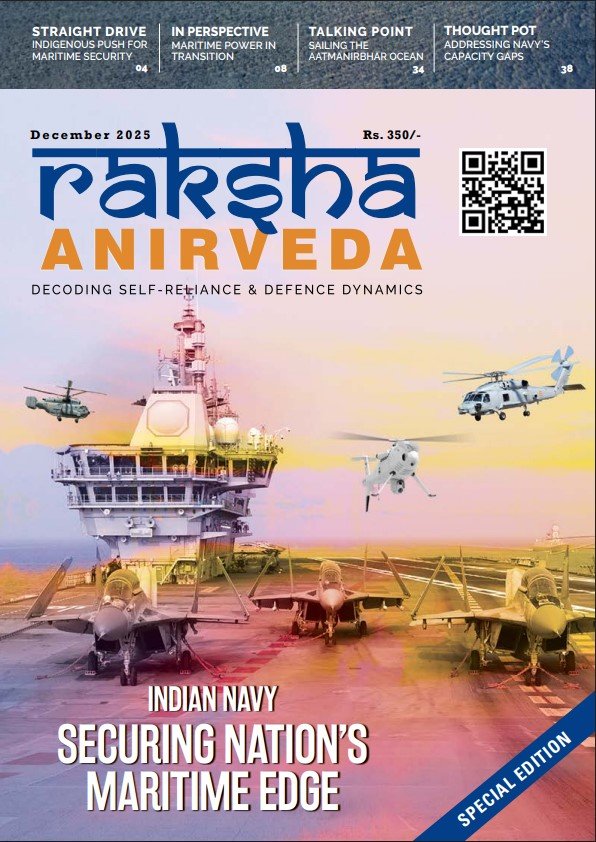These days, the Indian media is making much noise over Defence Minister Rajnath Singh’s statement regarding the Pakistan-occupied Kashmir (PoK). The speculation is rife because of ongoing protests in PoK. Based on these protests, Rajnath Singh has reportedly said that PoK would soon join India on its own. He has not stated ‘how’? Also, ‘soon’ is an ambiguous term, which can mean six months to six years. Anyway, whatever time it takes, my point is: Should India yearn for a ‘sick’ entity? Should we not think beyond our emotional desire?
I am aware that the answer to this question would betray my nationalistic fervour. Maybe some geo-politically ‘illiterate’ people would brand me as anti-national or a traitor. But, at peril to my patriotism, I would insist that nourishing such a desire to take back PoK would be not only an emotional folly but a strategic blunder.
I do know that legally speaking, the entire state of J&K had acceded to India on October 27, 1947, when Maharaja Hari Singh of J&K had signed the instrument of accession. It is noteworthy that the Maharaja was initially reluctant to join India. It is also true that he had signed this instrument of accession after Pakistan attempted to annex J&K forcibly, through what was called ‘tribal invasion’. (Read my book, Kashmir – A Different Perspective).
Kashmir’s Maharaja Hari Singh wanted to stay independent, as was authorised in the Indian Independence Act of the British Parliament of July 5, 1947. The act had a provision, which authorised some 562 Princely states of British India to choose between two newly created nations, India and Pakistan, or stay independent.
It is no rocket science to understand that Maharaja Hari Singh wanted to stay independent, as was authorised in the Indian Independence Act of the British Parliament of July 5, 1947. The act had a provision, which authorised some 562 Princely states of British India to choose between two newly created nations, India and Pakistan, or stay independent. But his desire for independence was short-circuited by Pakistan.
By the time India intervened on October 27, 1947, ‘tribal raiders’ of Pakistan were knocking at the doors of Srinagar. The intervention pushed the invaders beyond Uri, across river Jhelum. However, at this stage, on wrong advice, Prime Minister Nehru made two mistakes: one, not allowing the military to go across the Jhelum and two, taking the matter to the United Nations, under the wrong chapter, to settle the dispute, instead of the eviction of the aggressor.
It is believed that it was Sheikh Abdullah, a popular Muslim leader of the Kashmir valley in 1947, who had advised Nehru not to go beyond Uri. According to him, the area beyond Uri, the Muzaffarabad-Rawalkot region, was not part of Kashmir but an extension of western Punjab, though it formed part of the J&K territory of Maharaja Hari Singh. The Indian Army was then in a position to take back the entire PoK.
As far as going to the UN is concerned, there is enough evidence available that India’s Governor General, Lord Mountbatten, had asked Nehru to go to the UN to settle the dispute. Surprisingly, at the same time, he had advised MA Jinnah to avoid intervention by his army because of the danger of ‘becoming an aggressor’, with serious implications. He had met Jinnah in Lahore on November 2, 1947. Surprisingly, the official head of India was meeting Pakistan’s Governor General while two armies were killing each other. It was Mountbatten’s double game, which led to Kashmir issue becoming a bone of contention between the two new nations. It was the betrayal of a British officer, Major Brown, of J&K State Forces, which led to the annexation of Gilgit-Baltistan by Pakistan.
The follies of 1947-49 cannot be undone now. The British India’s ‘Great Divide’ of 1947 that resulted in Pakistan and India, had also, by default, led to the partition of Jammu and Kashmir. The ceasefire line of 1949, with some adjustments, is the only legitimate solution, with a win-win position for both countries.
It is pertinent to mention here that the Skardu garrison of Gilgit-Baltistan was held by J&K State Forces under Lt Col Sher Jung Thapa till April 1948. The garrison commander kept requesting reinforcement, but India did not send any reinforcement to this garrison due to a wrong policy. Thus, the garrison had to surrender in April 1948. India, thus, gave PoK (Muzzafrabad-Rawalkot area of western Punjab and Gilgit-Baltistan) on a platter to Pakistan.
A Pakistani author, Tariq Ali, writes in his book The Duel that the Indian military was keen to finish the job after the Bangladesh victory in 1971. Field Marshal Manekshaw is stated to have asked Indira Gandhi for permission to ‘Finish the Job”. Tariq Ali writes that Indira Gandhi was not interested, and therefore, she dismissed Field Marshal Manekshaw by saying that she would consult her cabinet. In the cabinet meeting, she found everyone enthusiastic, and she was the lone ranger. “But, by the end of the meeting, everyone dropped the idea of invasion of West Pakistan,” she told Tariq Ali. It may be noted that Tariq Ali had interviewed Indira Gandhi months before she was assassinated on October 31, 1984. Thus, India had let go of another opportunity to go by, similarly, as her father had done in 1948.
And the clamour for retaking PoK today, after 78 years, seems not only illogical but full of a geo-political minefield, when it has been fully immersed in Pakistani colours. The Indian part of Kashmir had just begun to breathe fresh air from decades of Pakistan-sponsored militancy, and adding POK to it would further take it back to the gory days of the 1990s. Its unification with India should be sought only if Pakistan ceases to exist. We must draw a lesson from Bangladesh. It is better to keep it with Pakistan as an injured limb than amputation.
Here, it is important to note that India’s own security and integrity lie in the existence of a stable and peaceful Pakistan. Its break-up or non-existence would invite a serious problem for India. One must not lose sight of the nuclear arsenal of Pakistan and the danger of its falling into the hands of ‘crazy religious elements’. This is the geopolitical reality of today. Whatever might be the degree of animosity and enmity with Pakistan, India must not allow turbulence across borders because of the spill-over effect that would endanger its own existence.
As regards the Indian Parliament resolution of February 22, 1994, declaring the whole of the state of Jammu and Kashmir, as it existed in October 1947, to be an integral part of India, one can argue that real Kashmir is already part of India. The resolution also asked Pakistan to vacate territories occupied by it. It is essential to know that PoK then consisted of two entities, namely Western Extension of Punjab (called Azad Kashmir by Pakistan) and Gilgit-Baltistan (called Federally controlled Northern Areas).
India must understand that people of POK, particularly of Gilgit-Baltistan, might be up in arms against the Pakistan government due to poor economic conditions. The public might be emotionally charged now, but once emotions subside, people might not like to be with India; 78 years of cultural history have created an emotional wall.
The total area of PoK is 13,297 sq km, which is 30% of the Jammu & Kashmir state of 1947. India has been left with 60% of the original state of J&K (10% area of the Kashgam Valley and Aksai Chin is with China — ceded by Pakistan and annexed by China, respectively). Strange, while India talks about taking back PoK but it hardly voices concerns about Aksai Chin and the Kashgam valley.
Ironically, follies of 1947-49 cannot be undone now. The British India’s ‘Great Divide’ of 1947 that resulted in Pakistan and India, had also, by default, led to the partition of Jammu and Kashmir. The ceasefire line of 1949, with some adjustments, is the only legitimate solution, with a win-win position for both. One ought to be reminded of a secret but unwritten clause of the Shimla Agreement of 1972, which sought the Line of Control (LoC) as the international border (IB) between India and Pakistan. It was the logic of this clause that Indira Gandhi allowed ZA Bhutto to delink Northern Areas, Gilgit-Baltistan, from Azad Kashmir in 1974 and take it directly under federal government control.
Any digression from the accepted Shimla Agreement 1972, verbal or written, would be strongly resisted. It would be a breach of trust. It would also invite international criticism. What’s more, India must understand that people of POK, more particularly of Gilgit-Baltistan, might be up in arms against the Pakistan government due to poor economic conditions. The general public might be emotionally charged now, but once emotions subside, the people of PoK might not like to be with India —78 years of cultural history has created an emotional wall. India would not only have social and political problems, but a plethora of administrative and security issues. PoK is not Bangladesh; it can be easily infiltrated by religious elements and thus incite the masses. What’s more, the venom may sneak into other areas. Let the evil be far away!
-An ex-NDA and Wellington Staff College graduate, Col Rajinder Singh is a renowned author and security analyst. He has authored four books, two individually and two in collaboration. His best-selling books are Kashmir – A Different Perspective and The ULFA Insurgency. The views expressed are of the author and do not necessarily reflect the views of Raksha Anirveda







